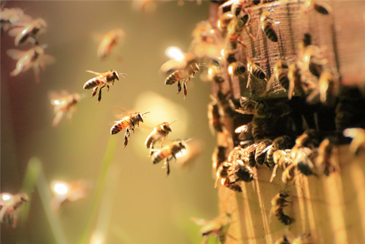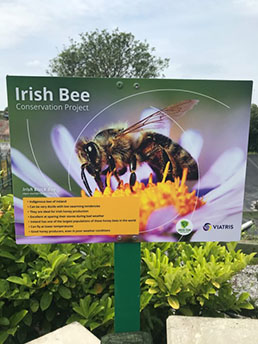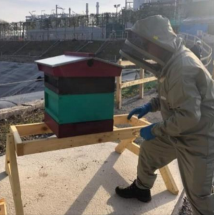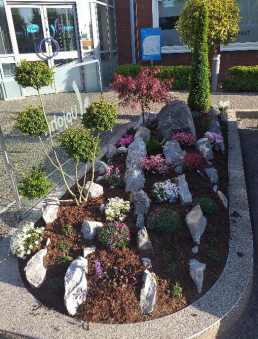Show Menu
Choose Your Location
You are now leaving the Viatris page for a Viatris affiliate site or third party site that is solely responsible for its content, including its compliance with guidelines applicable in certain geographies. Links to Viatris affiliate sites and third party sites are provided as a resource to our visitors and may not be governed by the same regulatory requirements applicable to this site and unaffiliated third party sites are subject to their own terms and data protection notices and practices. Moreover, if their third party site is subject to other country laws, regulatory requirements, data protection requirements or medical practices may differ between countries and the information provided therein may not be suitable for use in your country.

July 1, 2021

For the last six years, a group of environmentally conscious colleagues called the Green Team have worked to make a difference on Little Island, Ireland, home to a Viatris plant that manufactures active pharmaceutical ingredients. The team has raised awareness of marine health, conducted beach cleanups, and worked with community environmental groups on ways to protect and preserve the environment. Last year, they turned their attention to the bees.
The team established an apiary on the 19-acre site with the goal of helping the Irish bee population, which like others around the world have been increasingly under threat from climate change. But the two beehives now on site are doing more than just giving these important pollinating insects a place to thrive. It’s also created a lush landscape where colleagues can enjoy an outdoor 1 km walk, opportunities to educate nearby residents about the importance of bees, and benefitted a local hospice through employee donations given in exchange for the honey collected from the resident bees.
“We have a lot of colleagues here in science roles, and I think because of that there’s a great curiosity here about the bees. It’s a kind of scientific curiosity,” said Clare Murray, an environmental analyst at the plant who leads the Green Team. “And it’s even more exciting because this project has far-reaching positive effects on the environment.”

According to the Irish Bee Conservation Project, there are 101 total bee species in the country, a number that has declined by 52 from previous years. Bees are important pollinators in nature, with a third of the world’s food production relying on bees. The most predominant bee at the Viatris site is the Irish black honeybee, or Apis m. mellifera, which make up the purest stock of black bees in Europe.
Team members estimate there are more than 100,000 bees among the wildflowers, yew trees, and other plants and flowers they’ve added to the area to create the ideal bee habitat. The actual apiary is secluded from foot and vehicle traffic, but colleagues are encouraged to observe the bees from a nearby viewing area. And they often do. When the weather is nice, it’s common to find colleagues taking their breaks near the apiary.
“The bees need flowers and we have planted flowers that we know the bees will need at certain times of the year,” said Tony Nation, a shift supervisor and member of the Green Team. For example, there are a lot of white flowers at the site because the bees that come out at dusk to pollinate are drawn to white in the limited light, he said.

Murray said it has truly been a team effort to establish the habitat, with several colleagues who are also avid beekeepers helping out. One of those colleagues is John O’Connor, a Viatris contractor who sparked an interest in bees as a child when he saw two local beekeepers and was fascinated that they never got stung. Today, O’Connor has his own bee house at home in addition to helping maintain the hives at the plant.
He can often be seen with Tony Varian, a shift supervisor who is also a certified beekeeper, suiting up in beekeeping gear to check on the hives and ensure the bees are healthy. Last year, O’Connor took the honey from the hives home, where it is cleaned, heated, and jarred. Colleagues were able to take the honey home for a small donation to a local hospice.
“Everyone asks me the same question all year – when can we get more honey,” O’Connor says.
In addition to the many colleagues who have contributed to the project, the team has worked with the Irish Bee Conservation Project to set up a bee lodge where solitary native bees can safely rest. And through the support of the All Ireland Pollinator Plan, the team has donated educational signage at local wildlife parks to educate residents about the importance of bees.
Nuala Kerley, senior manager of Environmental Health and Safety, said the team also works with a team of researchers at a local university, who come and take bee samples at the site to monitor the health and progress of the hive.
“We know we are contributing to the biodiversity in Ireland,” Kerley said. “It’s really a great feeling to know we’re making an impact.”